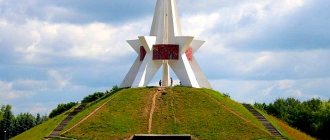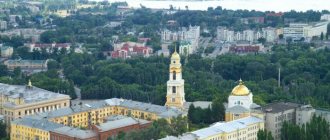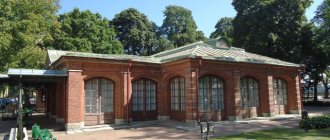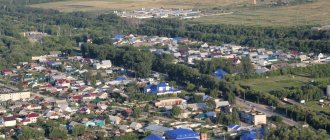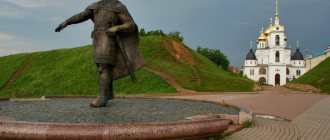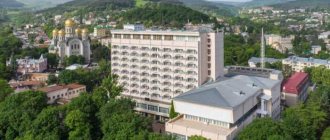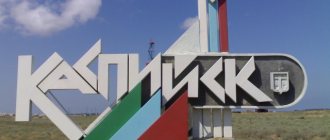Monument to Peter I
Lipetsk, Karl Marx street
In many cities of Russia you can find monuments and sculptures dedicated to famous people of our country, who not only, for example, visited this or that city, but also had a great influence on its development. One of these people for Lipetsk was Peter I. It was thanks to him that iron smelting and ironworks appeared in the city, where, among other things, guns were made. With their help, the Swedes were defeated near Poltava. In addition, Peter discovered mineral springs, and since then Lipetsk has become one of the oldest resorts in our country.
Monument to Peter I in Lipetsk
The monument in honor of the great emperor in Lipetsk appeared in 1996. With the advent of the monument, the square on which it was installed began to be called Petrovskaya by local residents. In 2003, the city administration decided to officially rename Karl Marx Square to Peter I Square. The construction of the monument itself was carried out in the shortest possible time. The authors of this work were sculptors V.M. Klykov. and Wagner A.E., and the architect was Soshnikov S.A.
The cladding of the monument is made of local stone – dolomite. The restoration of the monument itself also took place in the city at the Novolipetsk Metallurgical Plant. The statue of Peter is 5.6 meters high and weighs about 27 tons. Peter I appears to residents and guests of the city as a man confidently taking a step towards new discoveries in the city and carrying a scroll in his hand. The column under the monument is decorated with the Russian coat of arms and figures in the form of mermaids.
Source
Monument to Peter I on Peter the Great Square (Lipetsk)
The construction of a monument to Peter I in Lipetsk to commemorate the 300th anniversary of the Russian fleet is not accidental. By royal decree, the construction of the Upper and Lower Lipa metallurgical plants, cloth, steel, stocking and hat factories, and a tannery began here in 1703, which until 1711 supplied cannons, cannonballs, bombs, anchors, ship equipment, ballast, cold steel and firearms , uniformed the Azov Fleet, and during the Northern War they supplied supplies to the St. Petersburg Admiralty.
The monument, installed in the historical center of the city, represents the figure of Peter I, placed on a high pedestal. The tsar, with his head uncovered, walks with wide, confident steps towards the Nizhny Lipa plant and the Voronezh River, a cape flutters behind his shoulders, and he holds a scroll in his hand.
On the bank of Voronezh in the first half of the 18th century there was a testing ground where guns cast at factories were tested, and upstream there was a shipyard where plows and other small ships were built for the delivery of the “Don holidays”, the Azov campaign, and later for sending products from the Lipa factories to other cities.
The monument was erected on the initiative of the Lipetsk Regional Local Lore Society, which invited sculptor V. M. Klykov to implement the idea. The bronze figure of Peter was made at the Mechanical Repair Plant of the Novolipetsk Metallurgical Plant. The height of the figure is 5.6 m, weight – 27 tons. The sculpture consists of 34 bronze elements, fastened together with threaded connections and welding. Parts were cast in the steel foundry and old foundry shops of JSC Novolipetsk Metallurgical Plant by foundry workers I.Z. Alekseev, S.V. Glavinsky, A.A. Zheleznyakov, and foreman of mechanics V.M. Melnikov. General control over the progress of work was carried out by the chief engineer of the plant A. D. Belyansky, technical supervision was carried out by the head of the foundry shop A. I. Lupov, technological supervision was entrusted to the chief foundry worker G. V. Smolyaninov. The architectural project was carried out by Lipetsk architect S. A. Soshnikov.
The oval column of the 12-meter pedestal, lined with local dolomite, is decorated with the Russian coat of arms and rostra with figures of mermaids. On the front and back sides of the plinth supporting the column are cartouches with dedication inscriptions, framed with laurel wreaths. The wide southern and northern sides of the base bear bas-reliefs made of forged copper measuring 1.6 x 3.2 m, depicting the arrival of Peter I at the Lipa factories, the tsar and his associates at the table near the drawings. The details decorating the pedestal were made by Lipetsk sculptor A.E. Wagner.
The podium of the monument, decorated with large cast-iron cannonballs, a chain fence and five-armed lanterns, is designed in the form of a stylized fortification structure - a fortress site with retaining walls around the pedestal.
The opening of the monument took place on October 29, 1996 on the square named after Karl Marx. At the request of local historians, in 2004 it was renamed Peter the Great Square.
Literature
Klokov A. Yu.
Lipetsk metallurgical region in the history of the creation of the Russian fleet // Scientific, technical and innovative activities of regions of Russia. Vol. 4. M., 1995. pp. 172–173.
Klokov A.
Yu
. “Iron factories and others have matured” // Rodina, No. 1. 2004. P.117–121.
Petrukhintsev N. N.
Peter the Great in Lipetsk // Rodina, No. 1. 2004. pp. 113–116.
Monument to Peter I on Karl Marx Square // Guide to the Lipetsk region. Lipetsk, 2003. pp. 21–22.
Klokov A. Yu.
Peter's monuments in the urban planning structure of Lipetsk // Peter's monuments in Russia and Europe: study, preservation, scientific tourism: Materials of the VII V International Peter the Great Congress. St. Petersburg, June 5–7, 2015. St. Petersburg, 2016. pp. 172–180.
In the footsteps of Peter
The monument to Peter the Great on Petrovsky Spusk is rightfully considered the symbol of Lipetsk. We will go to him now.
In May 1836, the St. Petersburg merchant Pavel Nebuchenov, who had rested on mineral waters and recovered from his illness, sought approval in St. Petersburg of a project for the construction of a monument to Emperor Peter I in Lipetsk, by whose decree iron factories were built and mineral springs were opened. The monument was made by master Ivan Fedorov at the Tambov Iron Foundry. In 1839, the finished monument was brought to Lipetsk. They installed it in the middle of Sobornaya Mountain, near the road leading to the mineral springs and facilities of the Lipetsk resort.
The triangular base of the monument is made of gray local stone. There are bell-like cast-iron chawls installed on it - copies of the chawls of the former ship pier on the Voronezh River. On each side of the base there are narrow steps leading to a bypass area, surrounded on all sides by a decorative cast-iron fence. In the center of the site is a triangular, pointed spire, which symbolizes the rise of the Russian state.
On each side of the pedestal there are cast iron boards with bas-reliefs, and on the third side there was an inscription. The bas-relief, facing the side where the ironworks once stood, depicts work in a forge. The panel symbolizes the development of iron production in Lipetsk.
Another bas-relief, facing the modern buildings of the Lipetsk resort, depicts the ancient Roman goddess Hygeia, the patroness of health. The bas-relief symbolizes the healing properties of Lipetsk mineral water.
On the third side there is an inscription: “To the unforgettable, everywhere and in everything, the Great Father of the Fatherland, Emperor Peter the Great, the founder of our city, who pointed out in it new healing springs and new means of the people’s wealth.”
Did you know that on November 11, 1999, the monument to Peter I, which had stood for more than 160 years on Petrovsky Spusk, was removed from its pedestal and sent for restoration?
On May 7, 2000, on City Day, the opening of the restored monument to Peter I took place. The main work on its restoration was carried out by Novolipetsk metallurgists.
Liked? Then take a look at my hive: you are sure to find something fascinating.
This is interesting. The history of the former plaque with an inscription dedicated to Peter I on the front side of the monument is interesting. The merchant Pavel Nebuchenov composed the following inscription for the monument: “To the founder of the city, Emperor Peter the Great during the prosperous reign of Nicholas the First, through the zeal of the St. Petersburg merchant Pavel Nebuchenov.” However, the Cabinet of Ministers indicated that it considered it indecent to allow Nebuchenov’s own name to stand under the high names of Emperor Peter I and his imperial greatness Nicholas I. It was proposed to “compose a new inscription.” Approving the decision of the cabinet of ministers, Tsar Nicholas I, apparently, also considered it indecent for his name to appear on the monument next to Peter’s name, and wrote the following resolution: “I agree, but with one inscription of the name of Peter I.” The final text of the inscription, approved by the tsar, was as follows: “To the unforgettable, everywhere and in everything, the Great Father of the Fatherland, Emperor Peter the Great, the founder of our city, who indicated in it new healing springs and new means of the people’s wealth.” Later, this inscription was replaced by a more laconic one: “Peter I. Built in 1839.”
Now let’s walk along Petrovsky Descent from top to bottom: a cascade of stairs, green plantings on both sides, a cascade of fountains, and a stream of cars running towards us. Can you really think that we are walking along an old dam that once blocked Lipovka? The dam was 116 m long, 18 m wide, and 5.5 m high. A guidebook published 100 years ago mentioned a warning that was written on the sign in front of Petrovsky Descent: “Go at a walk.” This is where horses were kept at that time. The construction of the dam was necessary to provide the factories under construction with water. As a result of the construction of the dam, two ponds were formed. One of the ponds was located at the end of the Lower Park, closer to the Voronezh River. It occupied an area of about 70 hectares of land and contained 300 thousand cubic meters of water. The pond of the Nizhny Zavod (later it became known as Petrovsky) was formed by the waters of the Studenka River. Petrovsky Pond connected the Lower and Upper parks. There were piers on the shore on both sides. Boat trips were one of the favorite pastimes of Lipetsk residents and vacationers at the resort. Over time and without proper care, the pond began to silt up. In 1972–73, Petrovsky Pond was filled in and its territory was turned into a park, which is a pity: I would love to fly over the surface of the water.
The oldest monument in Lipetsk: “toothpick” of Peter the Great
Monument 1839 Monument 1996
The initiator of the construction of the monument was the merchant of the first guild Pavel Nebuchenov, a St. Petersburg resident who held a wine trade monopoly in the resort city, and therefore lived here for a long time and, as they say, recovered from a serious illness.
And so, as a sign of appreciation and gratitude to Peter the Great, who discovered mineral springs in Lipetsk, the merchant decided to build a monument to him at his own expense, about which in 1836 he addressed St. Petersburg through the Tambov governor, outlining his intention to “erect a monument to Peter in memory of the discovery named after them in Lipetsk in 1700 mineral springs and the construction of iron smelting and ironworks.”
On May 15, 1836, the project of the monument, with minor amendments, was “highly approved” by Nicholas I himself. The project was executed by the assistant of the Tambov provincial architect G. Shakhlarev. He is also the author of artistic bas-reliefs. The bas-reliefs were later restored and re-cast.
The obelisk was made by master Ivan Fedorov at the Tambov Iron Foundry. Brought to Lipetsk and inaugurated in 1839. The triangular base of the obelisk is made of gray local stone. The obelisk in the shape of a highly elongated triangular pyramid symbolizes the rise of Russia in all areas of production and science of the Peter the Great period. On both sides of the obelisk's pedestal there are cast iron boards with bas-reliefs. One of the bas-reliefs, facing the side where the ironworks once stood, depicts work in a forge. In the middle of the forge there is an anvil with a lightning bolt on it. The master is holding it with pincers, sharply waving a small hammer. In the corner of the forge, the heated vaulted mouth of the furnace glows with heat. An apprentice is working on his knees next to her. The bas-relief symbolizes the iron-making industry developed in Lipetsk under Peter I.
Another bas-relief, facing the modern buildings of the Lipetsk resort, depicts a linden tree - a symbol of Lipetsk; in the middle there is a reclining nymph, leaning her elbows on a vessel from which mineral water is pouring; the bowl with a snake on her chest signifies the healing properties of water.
On the third side of the pedestal there is an inscription: “To the unforgettable everywhere and in everything, the Great Father of the Fatherland, Emperor Peter I, the founder of our city, who pointed out in it new healing springs and new means of wealth for the people.”
" Later, this inscription was replaced by a more laconic one: “Peter I. Built in 1839.”
According to the technical passport, the dimensions of the base of the obelisk are 4x4x4 m, height 20 m. The monument is clearly visible both from the foot of the hill and from its top.
“Unforgettable Everywhere and in everything Great, Father of the Fatherland, Emperor Peter the Great, Founder of our city, Who pointed out in it New healing springs And new means of the people’s wealth.”
On November 11, 1999, the monument to Peter I, which had stood for more than 160 years on Petrovsky Spusk, was removed from its pedestal and sent for restoration. When preparatory work was carried out for the removal of the monument, they discovered a cast-iron foundation board, cast in Lipetsk, buried under the pedestal, with the inscription: “This monument was laid by the unforgettable and great zeal of the Lipetsk merchant Pavel Mikhailovich Nebuchenov on April 1839 on the 17th day.” On the same day, apparently, the construction of the monument began.
Source
The monument to Peter the Great was paid for by a merchant who was healed with mineral water
The Obelisk to Peter the Great is one of the oldest monuments in Lipetsk. It was installed back in 1839 and has the status of a regional architectural monument. It is located on Petrovsky Spusk, near the road that leads to mineral springs and facilities of the Lipetsk resort.
The obelisk to Peter the Great was erected in memory of the discovery of mineral springs by Peter I in 1700 and the establishment of iron smelting and ironworks. On the initiative of the merchant Pavel Nebuchenov, the monument was made at the Tambov Iron Foundry and opened in 1839. Nebuchenov was engaged in the wine trade in Lipetsk and was able to overcome a serious illness by being treated with mineral water. As a token of gratitude to the emperor, who discovered mineral springs in Lipetsk, the merchant built a monument to the ruler at his own expense. By that time, only two monuments to Peter had been built and all were in St. Petersburg. Therefore, for a provincial town this was a big event. By order of the governor of the province, a guard was posted at the monument.
The Obelisk of Peter I is a triangular metal pyramid on a stone base, with steps on each side. The obelisk is surrounded by a cast iron fence. Boards with bas-relief pictures are attached to the pedestal, one of which depicts the forge of Hephaestus. In the middle of the forge there is an anvil with a lightning bolt on it. The master is holding it with pincers, sharply waving a small hammer. In the corner of the forge, the heated vaulted mouth of the furnace glows with heat. An apprentice is working on his knees next to her. The image symbolizes the iron-making industry developed in Lipetsk under Peter I. And the second picture is dedicated to healing springs. Here we see the goddess Hygeia leaning on a vessel. Water pours from a vessel. The snake on the goddess’s chest is a symbol of the healing properties of Lipetsk mineral water.
Initially, there was a sign on the obelisk with the inscription to whom this monument was erected and in honor of what. After restoration in 1955, the cast-iron slab cracked and was replaced with another with the inscription “Monument to Peter I. Erected in 1839.” In 2000, a new restoration of the monument took place and the previous inscription was restored.
The shape of the obelisk - a pointed pyramid - became the subject of witticisms and jokes. The writer Gleb Uspensky, who visited the city in the second half of the 19th century, in a letter to a friend called this monument the “toothpick” of Peter I. According to one version explaining the shape of the monument, the pyramid is a sail, which indicates Lipetsk’s involvement in the creation of the Russian Navy .
How to get there?
You need to get to the “Revolution Square” or “Lower Park” stops, and then go up along the roadway. The monument is located right in the middle of Petrovsky Descent. A few meters from the monument are the Lipetsk mineral waters.
Stela to Peter I in Lipetsk
Obelisk of Petru, Lipetsk OAUK "Center for the Development of Culture and Tourism"
The Stela of Peter I is one of the symbols of Lipetsk. The monument is located on the descent from the mountain.
The monument was made in 1869. It was created at the expense of the wealthy merchant Pavel Nebuchenov. According to the surviving information, the capital's merchant often came to Lipetsk on trade matters and stayed at the resort. Gradually, the healing properties of mineral water saved Nebuchenov from a serious illness, and he decided to make a gift for the city - to erect a monument in honor of Peter I. Emperor Nicholas I approved the project of the stele.
Peter I in Lipetsk
Lipetsk is one of those few cities in Russia where Peter I not only visited, but periodically lived. In memory of this, a monument was erected here in honor of the last Tsar of All Rus' and the first Emperor of All Russia, who is also considered the founder of the city, which arose on the site of Sokolsk - one of the fortresses of the Belgorod abatis, located in the Sokol area on the site of modern Demyan Bedny Street.
View of the modern city of Lipets and the Sokolsk fortress on the map of the location of shipyards on the Voronezh River in the 17th – 18th centuries
In the era of Peter the Great, the fortress city of Sokolsk became famous for its shipyard, where more than 400 plows were built, which took part in the victorious Second Azov Campaign.
Shipyard in Sokolsk
And after the Boyar Duma in 1696 decided to build regular naval ships at the Voronezh shipyards, a lot of work to provide them with equipment, anchors and other metal parts was done at the Borinsky ironworks, located in Yeletsk district.
Borinsky ironworks
However, the sharp growth of shipbuilding in the 1700s required the creation of new metallurgical enterprises, the construction of which began on the territory of the modern Lipetsk region, rich in iron ore deposits. In 1703, the Verkhny Lipsky Ironworks, named after the Lipovka River, which flows through modern Lipetsk, was born as a city from the Lipskiye Zavody settlement, and its age is counted from the date of the launch of the Verkhniy Lipetsk Iron Works. factory - 1703.
Monument to Emperor Peter the Great - founder of the city of Lipetsk (1996)
The Lipa factories continued to work intensively even after Peter I transferred the main activity of creating a regular military fleet from the Voronezh shipyards to the Baltic. Moreover, metallurgical production expanded. In 1705, the Kuzminsky Hammer Anchor Plant began working, converting cast iron from the Verkhne-Lipsky plant into high-quality steel. In 1707, the Nizhne-Lipsky plant was launched, where hammering, drilling and weapons workshops were located here. Thus, the total capacity of the Lipsky plant in the first quarter of the 18th century was 76 thousand pounds of cast iron per year, which made it possible to produce up to 500 guns annually.
Casting cannons at an ironworks
The Lipetsk factories, which predetermined the development of the city of Lipetsk from a village and settlement into an industrial center, are now reminded of by a memorial sign installed on Petrovsky Spusk from the Nizhny Park - on the site where the factory office building was located in the past.
Memorial sign on the site of the factory office of the Nizhne-Lipsky plant
And in the Nizhny Park itself, laid out on the territory of the former Lipetsk factories, on a granite pedestal lie three naval cannons from the time of Peter I. This monument-symbol is dedicated to the beginning of metallurgical production in Lipetsk, the modern image of which is inseparable from the Novolipetsk Metallurgical Plant, which is the largest Russian steelmaking enterprise and ranking 17th in the world in terms of production volumes.
Two symbols of Lipetsk: cannons of the Peter the Great era and the Novolipetsk Metallurgical Plant
Just like the ironworks, Lipetsk owes its prosperity to the famous Lipetsk mineral waters, which, according to legend, were discovered by Peter I on the territory of the Lipetsk ironworks that he founded. Aware of the healing properties of mineral waters, the Russian Tsar ordered to study the composition of spring water and install a well on the site of the source, which was later transformed into the Lipetsk pump room.
Peter I - the discoverer of Lipetsk mineral waters
As a sign of appreciation and gratitude to Emperor Peter the Great, who discovered mineral springs in the city and established iron smelting and ironworks, in 1839 the first monumental monument was inaugurated in Lipetsk on Petrovsky Spusk, which was built on the initiative and with the money of the merchant of the first guild, Pavel Nebuchenov. A native Petersburger, he held a wine trade monopoly in Lipetsk, and therefore lived here for a long time and was treated with mineral waters for a serious illness, eventually overcoming the illness.
The first monument in honor of Emperor Peter the Great, the founder of the city of Lipetsk (1839)
And in the summer of 2022, the third monument to Peter I appeared in the Lower Park - a sculpture of the emperor, installed in the center of the new Lipetsk pump room, which was built on the site of the previous pavilion, destroyed in 1924.
Sculpture of Peter I in the new Lipetsk pump room (2020)
However, the most famous monument to Emperor Peter the Great in Lipetsk is undoubtedly the casting of his palm, imprinted on an 18th-century cast-iron slab - a famous relic kept in the Lipetsk Regional Museum of Local Lore. According to one of the legends, the Russian Tsar, while visiting the foundry of the Lipa Plants, accidentally leaned his left hand on the molding mixture prepared for work and thereby made an imprint of his hand on it, that is, a foundry mold, the model of which was his hand. Of course, the foundry workers did not miss this opportunity: they filled the mold with liquid metal, and they received a cast of the king’s left palm.
A relic of the city of Lipetsk is an 18th-century cast-iron slab with a cast of the ax and palm of Peter I
Subsequently, already in the 19th century, copies of this legendary casting began to be produced in mass quantities at the Lipetsk plant of the Milovanov brothers. Several of these castings are kept in the State Historical Museum in Moscow. Copies are also presented in the exhibitions of a number of Russian museums, including the Museum of the History of St. Petersburg, "Peter's House" in St. Petersburg and Kolomenskoye, in the local history museums of Astrakhan and Tula, as well as abroad - in the National Museum of the History of Ukraine and in "Peter's House" in Holland.
Copies of the original casting of the palm of Peter I in the exhibitions of the museums of Vyborg and the Ryazan Kremlin
At the same time, the exhibition of the Lipetsk Regional Museum of Local Lore presents the first of all castings, on the reverse side of which the following is stated: “A photograph from the handprint of Peter the Great made by Him on the sand in the iron foundry founded by Him in 1707 in the city of Lipetsk!” The original is kept in the Lipetsk mineral building. water Ian. at the factory Br. Milovanovs to Lipetsk.”
Two sides of the legendary casting made by the Lipa foundries in 1707
In 2016, Lipetsk cultural figures and historians, as part of the All-Russian action “Where the Motherland Begins,” unanimously chose this historical relic as a symbol of the Lipetsk region.
Dedicated to Peter I, exhibition of the Lipetsk Regional Museum of Local Lore

